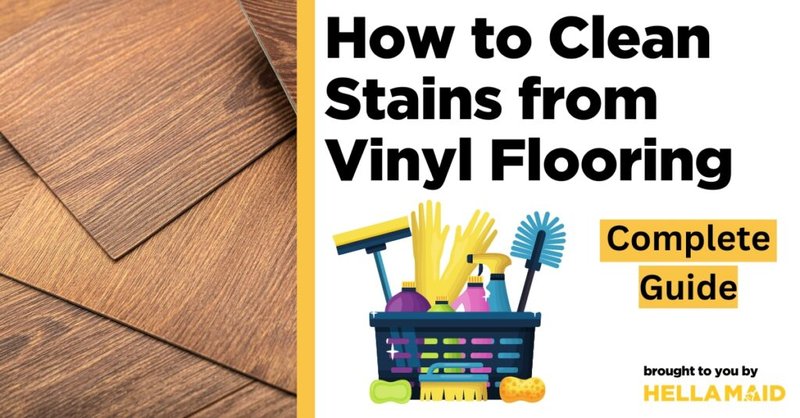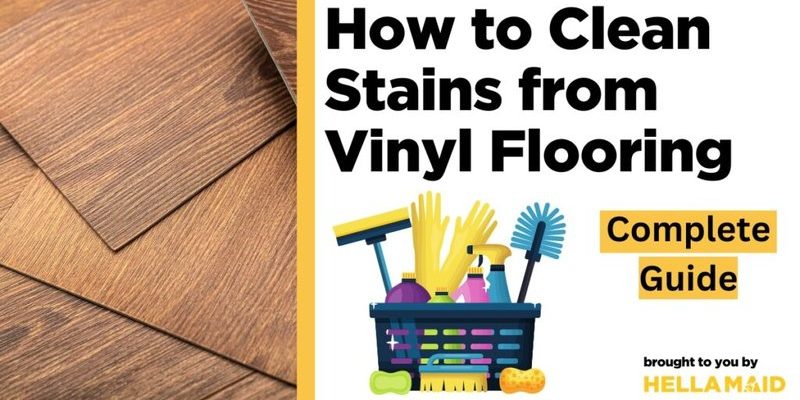
Here’s the thing: cleaning a vinyl threshold, whether it’s from a brand like M-D Building Products, Frost King, or any other manufacturer, isn’t rocket science. But getting rid of sticky, ground-in stains takes a bit more savvy than a quick once-over with soap and water. If you’re staring down a dingy doorsill that’s making your whole entryway look tired, don’t worry. I’ll walk you step by step through ways to get your vinyl threshold looking good as new—no special skills, no fancy equipment.
Why Vinyl Thresholds Get So Stained (And What Makes It So Tough)
Vinyl seems almost bulletproof at first glance. It shrugs off water, resists warping, and handles foot traffic day after day. But here’s what most people don’t realize: while vinyl is durable, its smooth surface can actually trap some types of stains more than you might think. It’s a bit like a white sneaker—stays nice with low effort, but once things seep in, it takes more work.
Mud, road salt, pet paw prints, spilled drinks, and even rubber from shoes can leave behind different types of stains. Over time, these stains can “bake” into the material, especially if your threshold sits in direct sunlight or gets a lot of use. Some stains are just surface-level grime, but others—like mildew, certain food spills, or ink—can work their way into tiny pores and low spots on the vinyl.
You might be wondering why regular cleaning sometimes makes the stains look even worse. Honestly, it’s because some cleaners leave behind a film, or they don’t lift the stain out of the texture. If you want that truly clean look, you need to approach it with the right tools and a little patience.
Things You’ll Need to Tackle Stubborn Vinyl Threshold Stains
Before you roll up your sleeves, let’s make sure you have everything you need for a proper cleaning. The right supplies make all the difference—trying to erase a sticky, tannin-rich coffee stain with just water is like trying to sync a universal remote by hoping for the best. Preparation matters.
- Mild dish soap—Gentle, but cuts most everyday grime.
- White vinegar—Helps break down hard water spots or old grime.
- Baking soda—A natural abrasive for scrubbing.
- Soft-bristle brush or old toothbrush—For getting into grooves.
- Clean microfiber cloths—Won’t scratch your vinyl.
- Bucket of warm water
- Isopropyl alcohol or rubbing alcohol—For ink or marker stains.
- Hydrogen peroxide—Great on organic stains like food or mildew.
- Rubber gloves—To protect your hands from chemicals and grime.
If you’re dealing with a super old or unknown stain, you might want to have a specialty vinyl cleaner on hand as a last resort. But for most messes, the above list covers it.
Step-by-Step Guide: How To Clean a Vinyl Threshold
There’s a bit of art to cleaning a vinyl threshold—especially when you’re staring down a stain that looks like it’s been reset into the material forever. Take it slow and let each step do its job before moving to the next.
1. Sweep or Vacuum First
Start by removing loose dirt, grit, and debris. Sweep the threshold area or use a handheld vacuum. If you skip this part, you’ll just end up rubbing dirt deeper into the vinyl—kind of like trying to pair a remote that still has dead batteries.
2. Wipe With Soapy Water
Mix a few drops of dish soap in warm water. Wet a microfiber cloth, wring out the excess, then wipe your vinyl threshold. This will lift away basic dirt and oils. Don’t rush—wipe the grooves and corners well.
3. Try a Baking Soda Paste for Tough Spots
For stubborn stains, sprinkle baking soda onto a damp spot, then scrub gently with your brush. If the mark is really clinging on, make a paste with a little water and apply it right to the stain. Let it sit for a few minutes before scrubbing again.
4. Attack Stains With Vinegar or Alcohol
If soap and baking soda aren’t cutting it, try white vinegar for minerals and general grime. For marker, ink, or mystery sticky spots, dab a cloth in isopropyl alcohol and gently rub the stain. Always test a hidden corner first to make sure it won’t damage the finish.
5. Use Hydrogen Peroxide for Organic Stains
For anything organic—think mildew, mold, or old juice—apply a bit of hydrogen peroxide with a cotton ball or cloth. Let it fizz for a minute, then rinse.
6. Rinse Thoroughly
Whatever you use, always finish by wiping the area with clean water. You want to reset the threshold, not leave a sticky or soapy film that attracts new stains.
Common Stain Types (And How To Beat Each One)
Not all stains are created equal. The way you attack a grimy mud mark isn’t the same as what you’d do for blue ink or yellow pet stains. Let me explain the best moves for the big offenders:
- Mud & Dirt: Soap and water, followed by a bit of scrubbing with a brush and baking soda if needed.
- Food & Drink Spills: Soapy water first, then try hydrogen peroxide for stubborn color or odor.
- Ink & Marker: Isopropyl alcohol—dab it on, don’t scrub too hard, and rinse right away.
- Mildew or Mold: Hydrogen peroxide, left for a minute, then scrubbed away gently.
- Adhesive Residue: Rubbing alcohol or commercial remover, always rinsing thoroughly afterward.
The goal is never to go nuclear from the get-go. Always start gentle and work up to stronger solutions. Vinyl thresholds can handle a lot, but harsh chemicals can cause them to fade or pit, which leads to more stains down the road.
Why It’s Important To Rinse—and Dry—After Cleaning
You might be tempted to stop once your threshold looks clean, but trust me: it’s worth an extra minute to rinse and dry. Leftover cleaner, vinegar, or even residue from a magic eraser can leave streaks or a tacky feel that attracts dirt even faster.
Here’s why you always want to “reset” your vinyl threshold after cleaning:
- Prevents sticky buildup that might look like a new stain a week later.
- Keeps the finish bright and less likely to scuff or attract grime.
- Stops chemical residue from breaking down the vinyl over time.
- Shows you if you missed a spot, so you can give it another go before calling it done.
Honestly, skipping the rinse is like troubleshooting a remote but never checking the batteries—most of the time, it’s the simplest step that makes the biggest difference.
How Vinyl Thresholds Compare to Other Door Sills
If you’ve ever cleaned an aluminum or wood threshold, you’ll notice vinyl is usually more forgiving. It doesn’t corrode, it’s not as prone to deep scratches, and it stands up to most household cleaners. But, it can discolor if you use bleach or harsh solvents, and it can melt or warp with high heat.
With wood, you’re often dealing with stains soaking in or the finish lifting. Aluminum can pit or oxidize if you use the wrong cleaner. Vinyl is kind of the “universal remote” of door sills—one size fits most, easy to maintain, and less likely to throw you curveballs.
Still, it’s not totally set-and-forget. High-traffic homes, especially ones with kids or pets, will see more marks and mystery spills. That’s why keeping up with regular spot cleaning is way easier than doing a full reset every few months.
Preventing Future Stains on Vinyl Thresholds
Let’s be real: you probably don’t want to add “deep clean the vinyl threshold” to your weekly list. A little prevention goes a long way. After you’ve finally beaten back those stubborn stains, here are some ways to keep things looking sharp:
- Wipe up spills right away. The faster you hit a coffee drip or muddy paw print, the less time it has to sink in.
- Add a doormat or rug on both sides of your entryway. They’ll catch the worst before it hits the threshold.
- Give the threshold a quick wipe when you mop floors.
- Use a gentle cleaner routinely, not just when something looks terrible.
- Check the caulk and seals around your doorsill. If moisture is getting underneath, it’ll make stains and mildew harder to remove.
In my experience, a little TLC now saves you a much bigger, more annoying mess to troubleshoot later.
When To Call for Backup: Specialty Cleaners and Professional Help
Every once in a while, you’ll run into a stain that refuses to budge—no matter how many different methods you try. Sometimes, that mark has been “baked in” by years of sun exposure, or it’s the result of a chemical reaction with certain cleaners (it happens more than you’d think). At that point, a specialty vinyl cleaner, usually made for deck railings or siding, might do the trick. They’re designed to reset the material without scuffing or fading.
If you reach a point where nothing works and it genuinely bothers you, don’t be afraid to call in a pro. A good handyman or cleaning service can sometimes restore or even reset a threshold by using tools and techniques most people don’t have at home.
Sometimes, the difference between a clean-looking entryway and one that always feels grimy is knowing when to call “enough” and let the experts take a crack at it.
Wrapping Up: Making Your Vinyl Threshold Look Like New Again
A vinyl threshold puts up with a lot—mud, foot traffic, spilled drinks, the works. But with the right tools and a little know-how, you can clean even the most stubborn stains and reset your doorsill to its best self. Remember: be patient, go step by step, and don’t reach for harsh chemicals unless you really have to. With a quick rinse and a bit of regular upkeep, your vinyl threshold can shine through years of daily life—no troubleshooting required.
